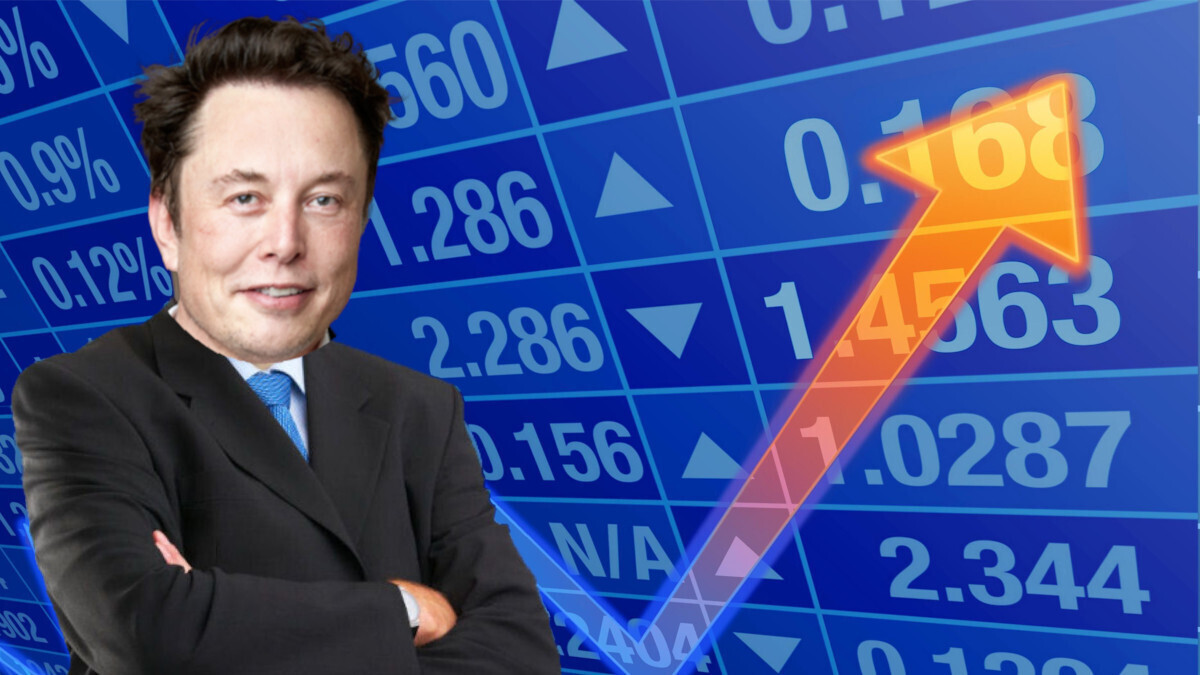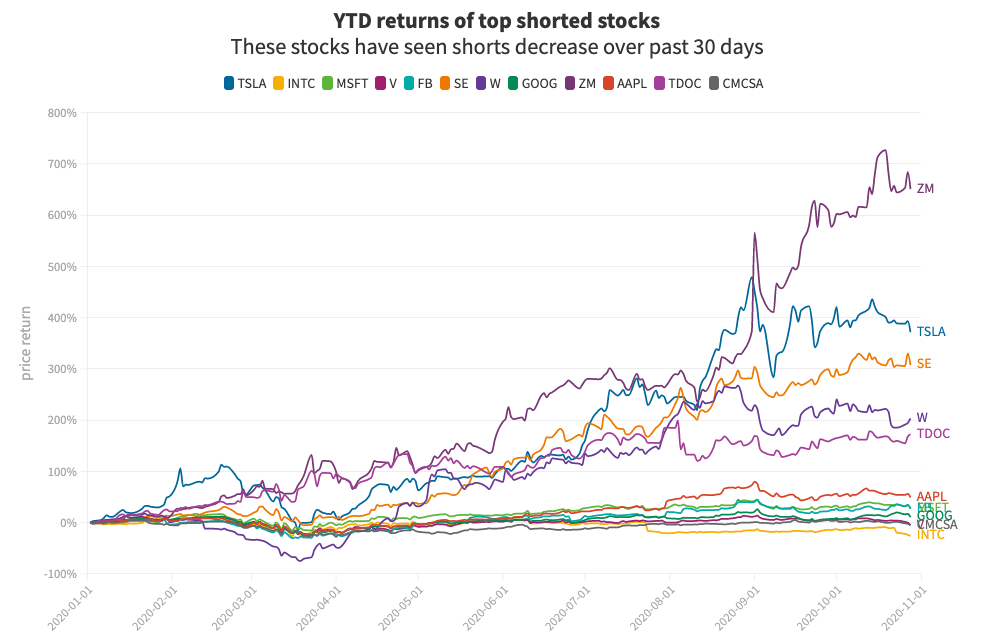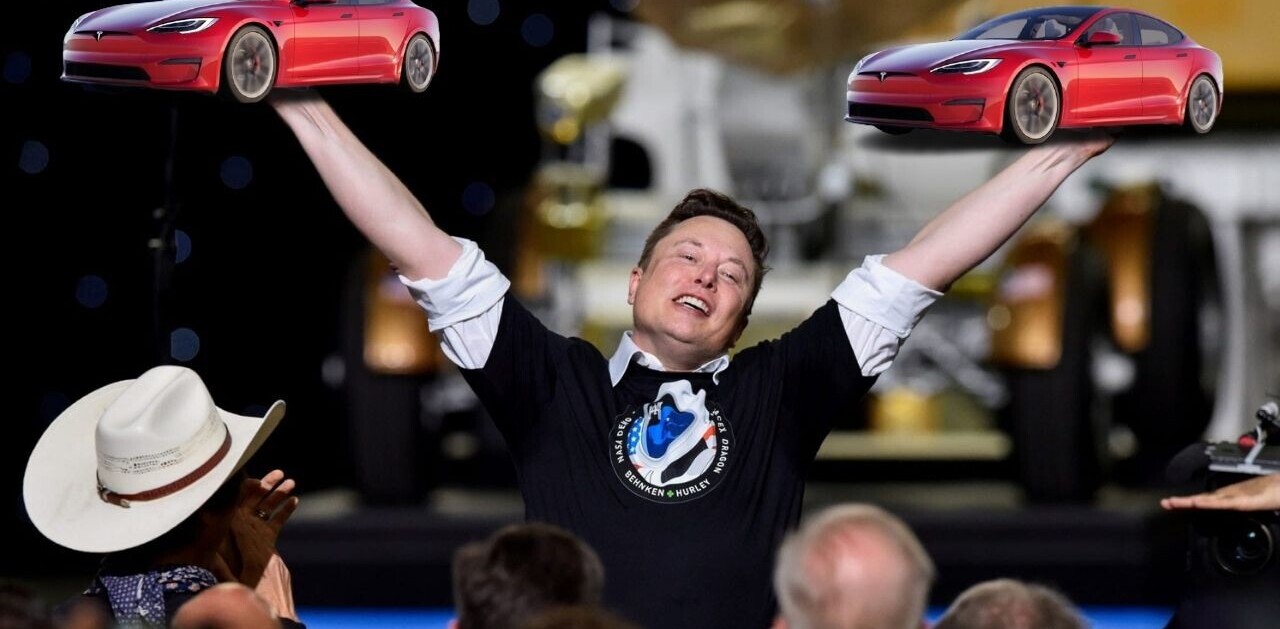
Intel stock is trading at its lowest point since May 2019. Bad news for shareholders, sure, but the company’s short sellers are likely over the moon — unlike Tesla’s.
Intel stock fell nearly 14% in the 30 days preceding October 28, during which time the total value of the company’s shorts fell by nearly $1.35 billion, which is the biggest decrease of any top shorted stocks on the market.
Short sellers bet that a company’s share price will fall, as opposed to going “long” on a stock believed to one day increase in value.
Short sellers borrow shares to immediately sell when the price is high, re-buy the stock when the price is low, and pocket the difference after returning the shares to their broker (a move known as “closing a short.”)
This means loads of Intel shorts were closed in the past month.
(If the visualizations don’t show, try reloading this page in your browser’s “Desktop Mode.”)
And so, now that the dust has settled somewhat for Intel, short sellers are once again betting that the company’s share price will go down. According to S3 Partners data shared with Hard Fork, the total value of shorted Intel shares increased by $14.4 million in the seven days leading up to October 28.
In that time, Intel stock fell 17%.
Short sellers are betting against Alibaba and Apple, too
Electric vehicle kingpin Tesla is still by far the most shorted US-listed stock on the market. S3 Partners calculated there’s $23.4 billion worth of Tesla stock (TSLA) currently shorted, which works out to be nearly 7.5% of the total number of shares in circulation.
Alibaba and Apple are the next most-shorted stocks, with $15 and $10 billion worth of short interest respectively.
The thing is, TSLA has risen more than 400% this year, making it rather difficult to make money by shorting it. S3 Partners’ Ihor Dusaniwsky told Hard Fork that TSLA shorters have lost $27.04 billion in mark-to-market losses in 2020.
However, TSLA short sellers have made $243 million profit in October, a month that has seen the stock sink 10%.
Is there a major Tesla “short squeeze” on its way?
“Hopium” shared among Tesla shareholders says that high short interest isn’t only not a real concern, but it serves to send its share price even higher — the idea being that short sellers will inevitably close their shorts and go long once it’s clear that Tesla’s share price simply won’t go down.
The velocity of this “short squeeze” would supposedly increase Tesla’s share price dramatically.
“As is true for any stock, if short sellers are forced to close their positions, the buy-to-covers resulting from this short squeeze would positively affect its stock price,” said Dusaniwsky. “But since most of TSLA’s short sellers are long term shorts, convertible bond arbitrage traders, and not momentum short players, a sudden large surge of buy-to-covers is unlikely.”

That isn’t to say, Dusaniwsky added, that Tesla short interest won’t gradually decrease as short sellers tap out due to their losses.
It’s actually been happening all year; the number of shares shorted decreased by 58% in 2020 as its stock price multiplied. Short selling acts as downward pressure on the market, and so the closing of shorts can do the opposite.
[Read: Xilinx stock goes up, AMD stock goes down after $35B buyout]
“TSLA has and is in a very unique position that, like in physics where potential energy is converted to kinetic energy, long side buying potential and short buying-to-cover potential can be converted to upside price movements,” said Dusaniwsky.
Zoom Video, Square, Carvana, Wayfair, and Teledoc Health also exhibit similar properties: “relatively quick and sizeable run-ups in short selling, building up buy-to-cover potential and are now waiting for a catalyst to start the reaction that will lead to upward stock price pressure,” he concluded.
Get the TNW newsletter
Get the most important tech news in your inbox each week.




